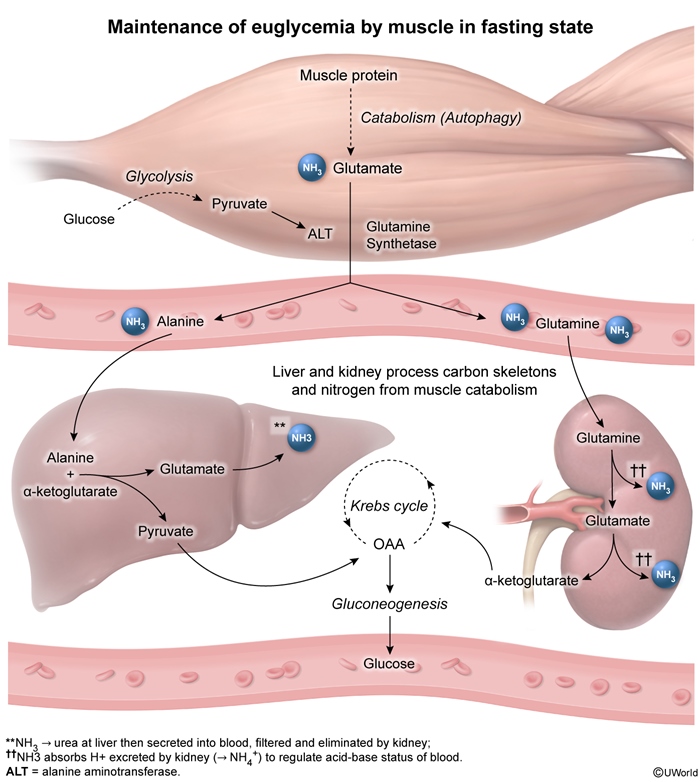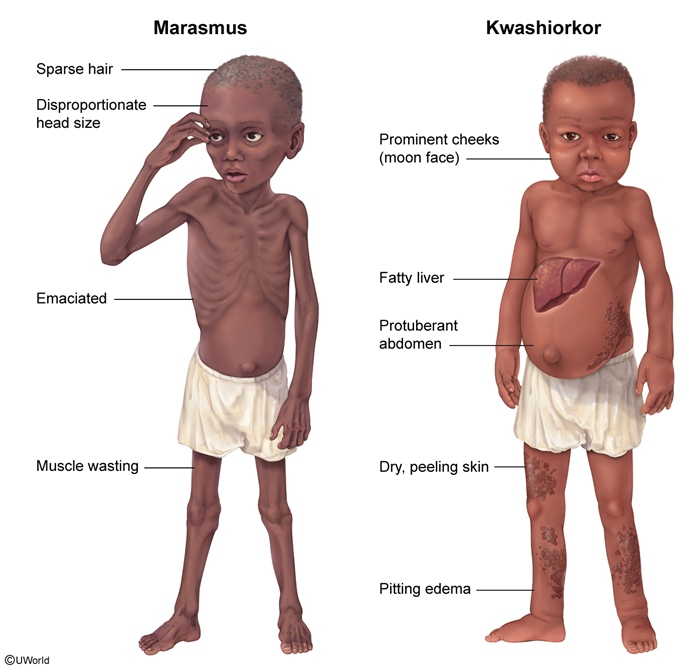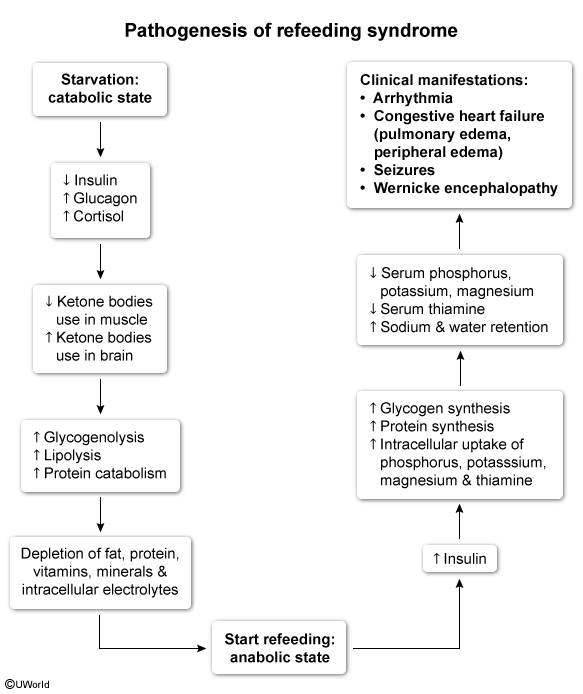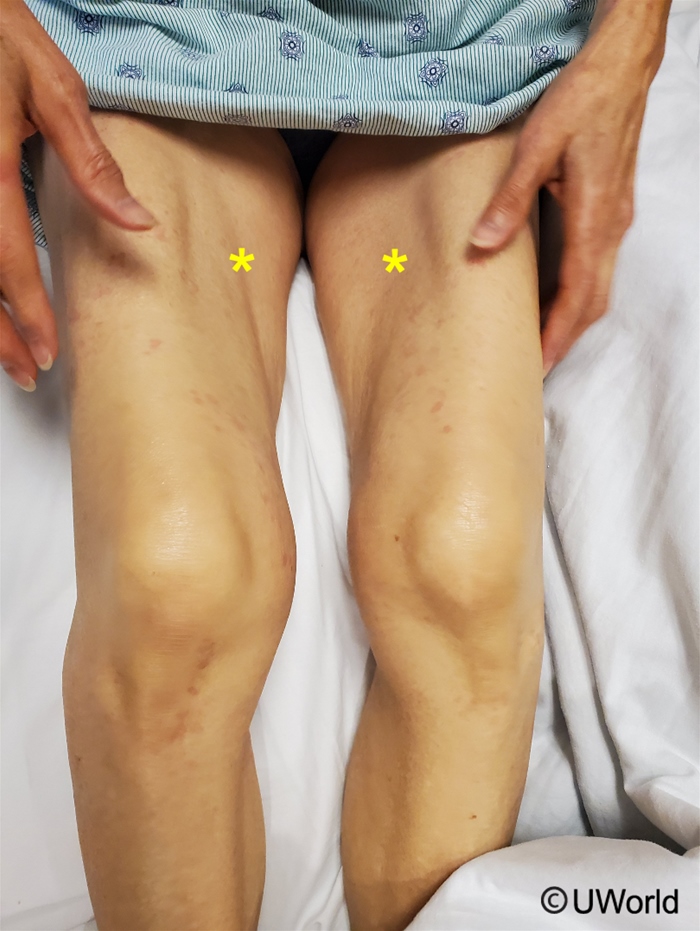Protein-Energy Malnutrition: Kwashiorkor, Marasmus, And Cachexia
Article Sections
Introduction
Protein-energy malnutrition (PEM) occurs with severe deficiency of protein, total calories, or both. Kwashiorkor and marasmus are forms of PEM affecting young children in impoverished regions. Cachexia is a form of PEM associated with underlying chronic medical conditions (eg, cancer).
Response to starvation
The human response to starvation involves transitions from glucose to fat to protein stores.
- Acute fasting (1-2 days) involves predominant glycogen catabolism. Insulin decreases and glucagon rises, promoting gluconeogenesis and glycogenolysis (liver, muscle).
- Early starvation (1 week) involves predominant fat catabolism. When glycogen stores are depleted, insulin decreases and glucagon rises further. As a result, ratios of AMP/ATP and NAD+/NADH rise, and catecholamines (eg, epinephrine secretion) increase. These factors activate hormone-sensitive lipase to promote lipolysis, fatty acid oxidation, and ketogenesis. Ketone bodies become the preferred fuel for the brain, and starvation ketosis (eg, high anion gap, elevated acetoacetate) can be seen. Subcutaneous fat is consumed first, followed by visceral fat depots (eg, omental, perirenal, epicardial).
Continue Learning with UWorld
Get the full Protein-Energy Malnutrition: Kwashiorkor, Marasmus, And Cachexia article plus rich visuals, real-world cases, and in-depth insights from medical experts, all available through the UWorld Medical Library.
Images

Image 1

Image 2

Image 3

Image 4
Tables
Table 1